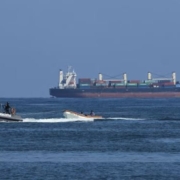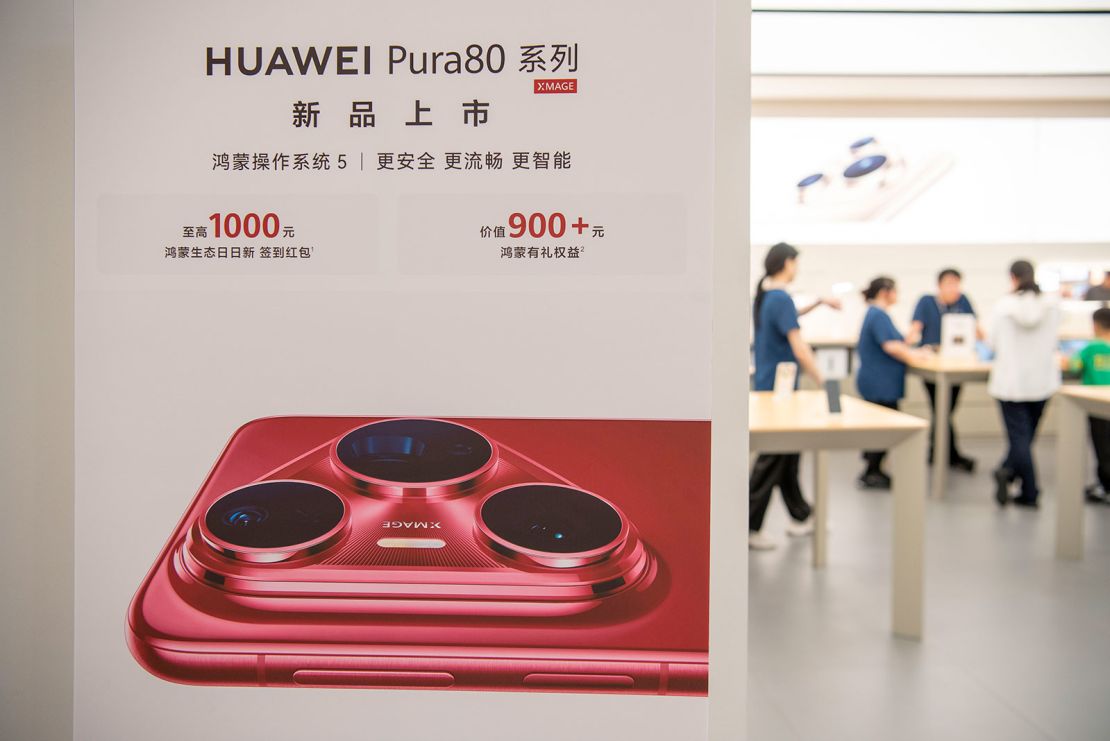Hong KongCNN —
Despite a 90-day truce in its trade war with the United States, China appears to be maintaining tight control over its rare earth exports – preserving a key source of leverage in future negotiations amid intensifying strategic rivalry with Washington.
As part of last week’s trade agreement in Geneva to temporarily roll back tariffs, China pledged to suspend or remove the “non-tariff” countermeasures it imposed on the US since April 2.
That has left businesses scrambling to find out whether that promise applies to China’s export controls on seven rare earth minerals and associated products, which were imposed on April 4 as part of its retaliation against US President Donald Trump’s “reciprocal” tariffs on Chinese goods.
Magnets made of these heavy rare earth elements are an essential part of everything from iPhones and electric vehicles to big-ticket weapons like F-35 fighter jets and missile systems. Yet their supply is completely dominated by China.
Fresh off the plane from the trade talks in Geneva last week, US trade representative Jamieson Greer sought to ease concerns surrounding this potential vulnerability. In a Fox News interview, he answered affirmatively when asked whether China had agreed to lift its export restrictions on rare earths as part of the truce.
“Yep, the Chinese have agreed to remove those countermeasures,” Greer said. “If they don’t do those things, we’re going to be back in a different situation. But I expect they’ll remove them.”
However, there’s little sign to suggest China is removing its newly imposed rare earth export control regime. If anything, according to experts and industry insiders, Chinese authorities appear to be strengthening implementation and ramping up oversight.
Related articleChina has a powerful card to play in its fight against Trump’s trade war
The system, introduced in April, does not ban exports outright, but requires government approval for each shipment. That had caused weeks long holdups as companies navigated the new regime, fueling fears among a wide range of American industries from automobile to defense.
“I would not be shocked to find that Mr Greer is expressing what he hopes will happen versus what has actually been negotiated to happen,” said Jon Hykawy, president of the Toronto-based industry advisory firm Stormcrow Capital.
“These controls are intended … to ensure that China does not run short of some materials that are needed for domestic Chinese priorities,” said Hykawy.
Gracelin Baskaran, director of the Critical Minerals Security Program at the Center for Strategic and International Studies (CSIS), said China’s export licensing regime is “here to stay” and “may stay for a long time,” allowing Beijing to retain its leverage in future trade talks with the US.
If the US were to turn around and renege on their tariff policy, China can easily withhold the required licenses, she said, adding that the licensing policy is dynamic by design, giving Beijing the power to decide which companies or countries can access its rare earth minerals and magnets at any given time.
Following the Geneva talks, China’s Commerce Ministry removed 28 US firms from its dual-use export control list and pulled 17 American companies from another trade and investment backlist. But the ministry made no mention of any changes to the exports control on rare earth minerals and magnets.
A spokesperson for the ministry said she had “no information to share” on whether China is lifting the export controls at a regular news conference last Friday.
Instead, Chinese authorities launched a crackdown on the smuggling of critical minerals – a broader category of resources that include rare earth elements. On May 12, the day US and China announced the tariff cuts, Chinese export regulators convened a meeting with authorities from multiple mineral-rich provinces with the aim to “prevent the illegal outflow of strategic minerals” and “strengthen oversight across every link of the production and supply chain.”
On the same day, Yuyuan Tantian, a social media account affiliated with state broadcaster CCTV, said in a post that “China’s rare earth export controls are continuing.”
Meanwhile, after weeks of delay, China has started to issue export permits for rare earth magnets – a development that experts say shows the new licensing system is up and running, rather than restrictions being eased.
Two Chinese rare earth magnet producers told CNN they had recently received licenses for exporting products containing dysprosium and terbium – elements that are often added to create more heat resistance in high-performance magnets commonly used in the automobile, aerospace and military industries.
The approvals are granted under a “one batch, one license” rule, meaning a new permit is required for each shipment and cannot be reused, according to the companies.
One of the companies received its first export license for a shipment heading to Southeast Asia. It has since been granted several other licenses for exports to Europe, including the carmaker Volkswagen in Germany.
“We haven’t received any indications about the (export control) system easing up,” a person close to the company told CNN.
Volkswagen said in a statement that its suppliers have received indications that “a limited number of export licenses have been granted.”
Baskaran, from CSIS, said that instead of lifting the export controls on rare earths, China removed 28 American firms from its export control list. That means those companies, mostly aerospace and defense firms, are no longer banned from accessing dual-use materials from China, and their Chinese suppliers can now apply for export licenses for rare earth magnets.
But it remains to be seen whether Beijing will ultimately give out licenses to American defense firms.
China’s rare earth export controls were “specifically designed to hit the US defense industry, and I cannot envision China stepping back from that,” said Thomas Kruemmer, director of the Singapore-based mineral and metal supply chain firm Ginger International Trade and Investment.
Under the new rules, exporters must include information about end-users in their applications, which take up to 45 working days to be approved.
“I am sure that in case of defense contractors, the Chinese Commerce Ministry will raise pesky questions, which the Americans may be unwilling to answer or may need Pentagon permission to answer,” Kruemmer said.
“This way they can conveniently delay the issuance of dual-use product export licenses beyond the self-set 45-day deadline, perhaps even beyond this 90-day (truce) window. And it still has the option to reject the license applications anyway.”
The licensing rules can also offer China visibility into where the rare earth magnets end up.
“You can still get the material, but you have to fill out paperwork, describe to China who the end user is. You’re going to give all this information and then (China) can see inside your downstream customer base and use and look for further vulnerability,” said James Kennedy, president of Three Consulting, a rare earths consultancy based in St Louis, Missouri.
“So it’s very smart. They get a looking glass into what you’re doing.”
For decades, the US and other countries have been dependent on China’s supply of rare earth minerals, which are difficult, costly and environmentally polluting to extract and process. China accounts for 61% of global mined rare earth production, but its control over the processing stage is much higher at 92% of the global output, according to the International Energy Agency.
The April export controls are far from the first time Beijing has leveraged its dominance in the industry. In 2010, China halted shipments of rare earths to Japan for nearly two months over a territorial dispute. In late 2023, it imposed a ban on rare earth extraction and separation technologies.
Beijing has also curbed exports of other critical minerals that are vital to the economy and global supply chains – including outright bans on the shipments of gallium, germanium, antimony and so-called superhard materials to the US.
“China’s control over rare earths, cobalt, gallium and all these critical materials is a geopolitical weapon of never-before measured and seen effect,” Kennedy said. “And at the end of the day, what this does is, it creates a lot of uncertainty. And that in itself is a powerful weapon.”
Baskaran said that by granting some of its first export licenses of rare earth magnets to Volkswagen, China is sending a pointed geopolitical message.
“Germany is at the height of geopolitical crossfire. The US is unhappy that Germany has been overtly quite friendly with China. So, by giving it one of the first licenses, China is sending a very positive signal in the Chinese-German relationship,” she said. “In this era of rising tension between the world’s two geopolitical superpowers, the licensing system may stay as a larger form of power.”























